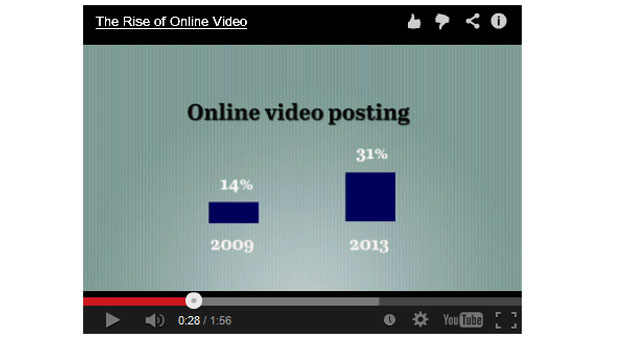
Videos are becoming more and more popular sources of entertainment, education, and learning. Not only are many people watching videos online—nearly 4 out of 5 (78%) of online adults do—but 31 percent of them are also posting or uploading videos to the internet, according to a new Pew Internet report complete with its own video summary. Nearly 1 in 5 (18%) online adults have posted videos they themselves have taken or created. Many are posting and watching video through social networking sites which make it even easier to share content online. The most popular genres to watch are comedy/humor (57% of online adults), how-to (56%), educational (50%), and music (50%). Of online adults who post their own videos online, family, friends, and events are most often the subjects.
So where can all this digital content be created? One resource is at Denver Public Library, where teens are getting into the maker movement using the Community Technology Center’s ideaLAB to create original videos, record music, and learn software. The digital media creation space was funded in part by a Library Services and Technology Act (LSTA) grant. Their projects are based on core STEM principles and 21st century skills and developed through creative making, tinkering, and playing. And ideaLAB is wildly popular: the space has seen more than 600 visits and more than 200 projects created. In fact, the lab is so popular, DPL has launched an indiegogo campaign to help expand and support the creative space and makers.
Interested in all things maker? Check out the Colorado State Library’s resources at http://create.coloradovirtuallibrary.org/library-makerspaces. And don’t miss the “train the trainer” tools, digital creation software tips, and lesson plans, and more on CSL’s Library Creation & Learning Centers site, http://create.coloradovirtuallibrary.org/.
Note: This post is part of our series, “The Weekly Number.” In this series, we highlight statistics that help tell the story of the 21st century library.